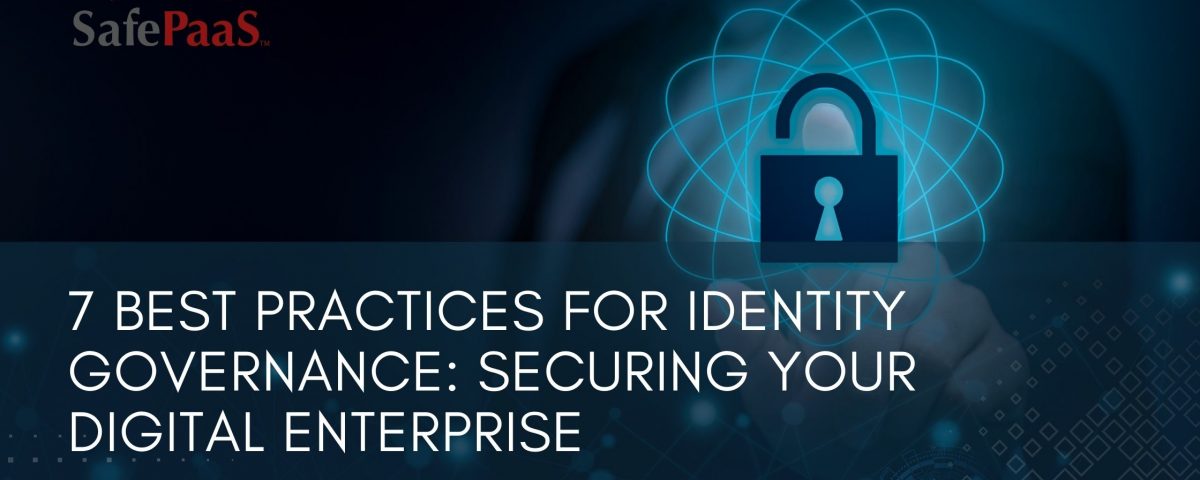7 Best Practices for Identity Governance


7 Best Practices for Identity Governance: Securing Your Digital Enterprise
CISOs face heightened pressure to protect business-critical assets across an expanding attack surface. At the same time, IT departments grapple with the challenges posed by a surge in new service models, applications, and identities that necessitate secure access on legacy platforms and in the cloud.
With nearly 49% of data breaches involving stolen credentials, cybercriminals exploit this complexity to their advantage; fortifying your organization's identity and security protocols through access governance processes and policies is a best practice essential for protection.
Effective identity access governance is pivotal for maintaining security, ensuring compliance, and managing the growing complexities of access and permissions.
7 Best Practices for Enhancing Identity Governance
It is crucial for your organization to follow best practices in identity governance because it helps establish strong frameworks for managing and securing identities, ensuring proper access controls, reducing the risk of unauthorized activities, safeguarding sensitive data, and maintaining compliance.
By adopting these best practices, your organization can enhance its cybersecurity posture, mitigate potential threats, and build a foundation for a trustworthy and resilient digital environment.
1. Unify Identity Lifecycle Management
Properly managing the entire identity lifecycle is fundamental for security. Implement solutions that manage the lifecycle process from onboarding, modification, and offboarding. Ensure access privileges are granted and revoked quickly and accurately to support a secure and efficient identity lifecycle.
2. Use a Policy-Based Access Control (PBAC) Solution
Use a solution that defines roles and access policies based on attributes. This practice streamlines access management, minimizes the risk of errors, and guarantees that your users have access aligned with your access objectives.
Role-Based Access Control (RBAC), while effective in streamlining access through job roles, falls short of achieving comprehensive governance. Its high-level structure lacks context awareness, risking over-provisioning and security vulnerabilities. The static nature of RBAC hinders adaptability and fails to address individual variances within roles. Organizations should adopt PBAC to attain true governance. Adopting a more nuanced and adaptive approach, like fine-grained access control, gives you the ability to align with modern cybersecurity demands.
3. Conduct Regular Access Reviews
Conducting periodic fine-grained access reviews is key for maintaining the principle of least privilege within your organization. Regularly review and adjust user access rights to align with their current job responsibilities. This practice helps you identify and fix unnecessary access, reducing the risk of unauthorized activities.
4. Automate Identity Processes
Use automation to simplify your organization's identity processes. Automate user provisioning, de-provisioning, and access requests to enhance efficiency and minimize the likelihood of errors. This becomes particularly important in large enterprises with various user bases.
5. Integrate with Your IT Systems
Ensure smooth integration with your existing IT systems, ITSM and applications. Your identity governance solutions should be adaptable to various platforms, whether on-premises or in the cloud. This integration facilitates centralized management, enhancing your security infrastructure.
6. Implement Continuous Monitoring and Analytics
Implement continuous organizational monitoring to detect and respond to suspicious activities quickly. Employ analytics to gain insights into user behavior and access patterns to identify potential security threats before they escalate, ensuring a strong security posture.
7. Collaborate with a Knowledgeable Solution Provider
Work with a knowledgeable solution provider well-versed in regulations impacting your industry to ensure that your identity governance practices align with compliance requirements, especially for sectors subject to data protection laws like GDPR or HIPAA. This partnership ensures that your organization stays ahead in maintaining secure and compliant identity management.
Effective identity governance is essential in an increasingly digitally interconnected world. Adopting these best practices can strengthen your security posture, ensure compliance, and steer the challenges associated with identities, access, and permissions. A proactive and adaptive approach to access governance will support strong cybersecurity strategies as threats evolve.
Ready to secure your digital future with PBAC identity governance?

